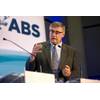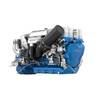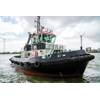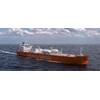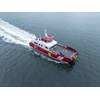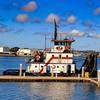Hydrogen-powered Ferry Sea Change Set to Enter Service

Sea Change, the country's first passenger ferry powered by hydrogen fuel cells, in San Francisco. (Photo: WETA)
The first-of-its-kind hydrogen-fueled ferry Sea Change will soon begin public service, providing zero-emissions transport for passengers in San Francisco Bay.
The groundbreaking commercial passenger vessel is the world’s first powered 100% by zero-emission hydrogen fuel cells. It was developed by owner SWITCH Maritime with grant support from the California Air Resources Board (CARB) as a solution to reduce emissions from the marine transportation system.
A group of private and public sector partners came together to officially launch the Sea Change on July 12, and the vessel will commence operations on July 19.
The 75-passenger Sea Change will initially be operated by San Francisco Bay Ferry’s contract operator Blue & Gold Fleet on a route between Pier 41 and the Downtown San Francisco Ferry Terminal for a six-month trial period intended to demonstrate the viability of the fuel cell technology. The demonstration, which allows passengers to ride for free, is being sponsored by a group of partners that includes Chevron New Energies; the Golden Gate Bridge, Highway, and Transportation District; and United Airlines.
Built by Bay Ship and Yacht in Alameda, Calif. and All American Marine in Bellingham, Wash., based on a design that originates from Incat Crowther, the 70-foot aluminum catamaran was launched in 2021, but its entry into service has been delayed by a combination of factors, including the pandemic as well as challenges associated with gaining U.S. Coast Guard approval for the use of its novel propulsion technologies. A Certificate of Inspection (COI) issued by the Coast Guard earlier this year cleared way for the ferry to commence operations.
Sea Change features an integrated hydrogen power system from Zero Emission Industries, with 360kW of polymer electrolyte membrane (PEM) fuel cells from Cummins and 100 kWh of XALT lithium-ion batteries, powering 600kW of electric motor propulsion from BAE Systems. The only emissions produced are water vapor and heat.
According to SWITCH, the clean-burning propulsion system enables transit distances up to 300 nautical miles and speeds up to 15 knots—operational capabilities and ranges similar to those of diesel-powered vessels. Its services speed will be about 8-12 knots.
“This is not just the start of service for the Sea Change, but hopefully also the start of much more active investment in the energy transition of the maritime industry in California and beyond,” said Pace Ralli, CEO of SWITCH Maritime.
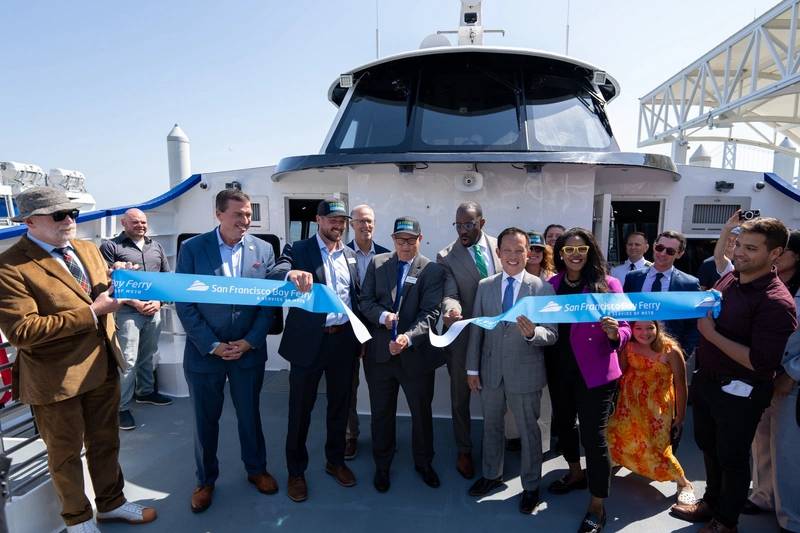 San Francisco Bay Ferry and a group of private and public sector partners launched the Sea Change on July 12. (Photo: San Francisco Bay Ferry)
San Francisco Bay Ferry and a group of private and public sector partners launched the Sea Change on July 12. (Photo: San Francisco Bay Ferry)
Sea Change is part of California Climate Investments, a statewide initiative that delivers cap-and-trade funds toward low-carbon transportation, community air protection and other initiatives.
“California is a global leader in the fight against the climate crisis, pioneering new technologies to ramp up clean energy and cut pollution — that’s why the zero-emission Sea Change is so exciting,” said California Governor Gavin Newsom. “I’m proud of our state’s role in advancing these innovations, and of our state’s public and private sector partners for bringing them to market and demonstrating their viability.”
“CARB is excited to witness the clean transportation future in action with the launch of the MV Sea Change and is proud to be part of the partnership that made this vessel a reality. Thanks to cap-and-trade dollars at work through our California Climate Investments, innovative and sustainable transportation options like the Sea Change are being developed to reduce greenhouse gas emissions and improve public health, particularly in California’s most vulnerable communities,” said CARB Chair Liane Randolph.
“Providing access to this world-first technology for the thousands of future Sea Change passengers is a key step toward protecting the environment,” said Jim Wunderman, Chair of the San Francisco Bay Ferry Board of Directors. “We have worked hard alongside our partners to make this groundbreaking ferry a reality, but it will be the passengers who bring it to life.”
“The Sea Change is a real-world, practical example of how the government and private sector can work together to help demonstrate the commercial viability and increase consumer confidence in hydrogen,” said Austin Knight, vice president, Hydrogen, Chevron New Energies. “Hydrogen can play a key role in achieving a lower carbon future for public transportation. At Chevron we are focused on building partnerships to develop a large-scale hydrogen business to help advance energy progress.


